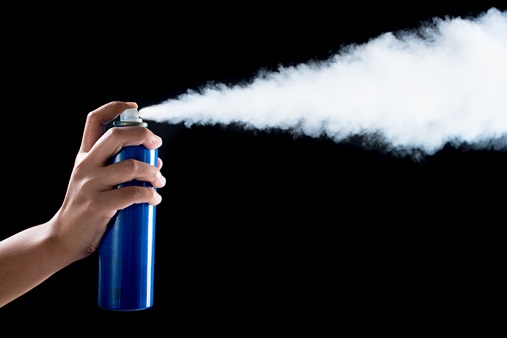Please note that this article has been updated (01/12/2022) to reflect recent state activity:
In March of 2018, US EPA proposed adding waste aerosol cans to the federal list of Universal Wastes. The rule became final in December of 2019. The agency outlined possible benefits from the rule, including:
- Easing regulatory burdens on retail stores and others that discard aerosol cans,
- Promoting the collection and recycling of aerosol cans, and
- Encouraging the development of municipal and commercial programs to reduce the quantity of these wastes going to municipal solid waste landfills or combustors.
Other benefits include longer on-site storage times. When managed as Universal Waste, aerosols will not count towards the amount of hazardous waste generated on site and a Hazardous Waste manifest is not required for shipment.
It is important to remember that a cost savings in terms of recycling and processing is not necessarily achievable. Recycling/processing facilities will continue to manage the aerosols in the same manner once received. Possible cost savings do include a potential reduction in the number of shipments, since Large Quantity Generators can now accumulate Universal Waste on site for one year as opposed to 90 days for Hazardous Waste. The rule promotes further savings since Universal Waste incurs no e-Manifest fee and no state-imposed Hazardous Waste volume taxes/fees.
Some conditions of the rule to keep in mind include:
- Both intact and leaking Aerosol Cans can be managed as Universal Waste
- Intact UW Aerosol Cans must be placed in containers that are structurally sound, compatible with their contents, have no signs of distress and are protected (stored away from) sources of heat.
- Leaking UW Aerosol Cans must be placed in a separate closed container and packed with absorbents.
- Containers for either intact or leaking UW Aerosol cans need to be marked as:
- Universal Waste – Aerosol Cans,
- Waste Aerosol Cans or
- Used Aerosol Cans
- You may mix various types of intact aerosol cans (different products) in the same container.
- All standard Universal Waste Management regulations (accumulation times, record keeping) are also in place under the new rule.
- Puncturing of aerosol cans is allowed if the emptied cans are recycled, not disposed of.
- Residues from the puncturing need to be managed as Hazardous Waste if applicable.
- The rule also addresses types of aerosol puncturing devices, operation of puncturing devices, residue management, documentation, and training requirements.
Individual State adoption will be the key factor for implementation of the rule. As you may imagine, many Universal Waste shipments cross state lines. For interstate shipments, both the state where the Aerosols are “generated” and the state where they are shipped for management must have adopted the rule in order for Aerosols to be managed as Universal Waste. The rule immediately became effective in the federally run states of Alaska and Iowa. New Jersey and Pennsylvania were early adopters of the rule. California, Colorado, Minnesota, New Mexico, Ohio, and Utah already considered aerosols to be universal waste and are allowed, under the Aerosol Can Rule, to keep these programs in lieu of adoption. As of December 2021, the rule is in effect in all states EXCEPT for WA, NV, WI, AR, VA, MT, WY, SD, NE, KS, TX, MO, LA, MS, ME, VT, NH, MA, MD and DC.
Note that the following states have the rule under consideration and are expected to update in 2022: KS, MA, MS, MO, NH, TX, VT, DC, WY. Texas is anticipated to publish a final rule late in January 2022 and have the rule go into effect on February 3, 2022.
WTS is pleased to provide you this update. Generators should also continue to monitor any correspondence from their respective state agencies on this issue and WTS will continue to monitor relevant developments and will advise our stakeholders accordingly.

